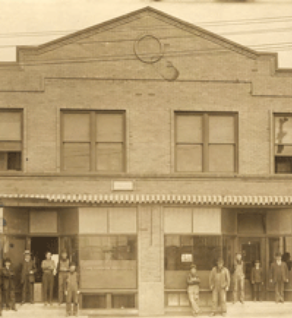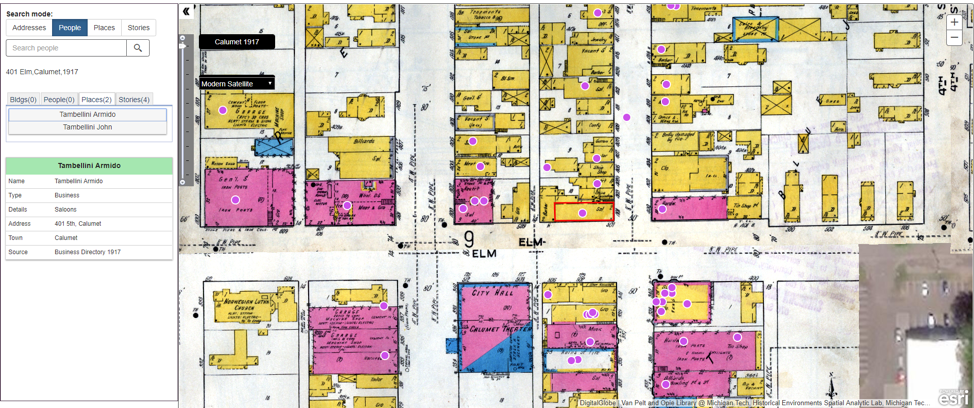|
(Today's blog post goes behind-the-scenes and features one of our Time Traveler Team members describing one of the many projects we've undertaken to expand the Keweenaw Time Traveler!) Hi, my name is Charles and I’m one of the new research associates working on the Keweenaw Time Traveller. I’m a fourth-year anthropology student at Michigan Tech and this summer I’ve been mainly working on adding story points to the Keweenaw Time Traveler from historic sources. These help to give additional context to areas and buildings. So far, most of these stories have been from the National Park Service (NPS) which has done a terrific job of recording the past. For example, the article “Windows Into the Past” from the NPS website listed a number of locations in Calumet, formerly the town of Red Jacket, their addresses, and a small blurb about the history of the site. These are perfect for adding to the Time Traveler as the information is well researched and can somewhat easily be linked to specific places. Now, for those who have used the Time Traveler, adding this information might seem like an easy task, given that it’s just finding an address and adding a story point. However, there’s a lot more to it than one may think. It’s a lot like detective work, using clues to find the exact location of a story. One of the biggest issues is actually finding the right address. Compare these two pictures from the 200 block on Main Street Calumet, one from 1900 and the other from 1917. As you can see the numbering systems are entirely different! This makes putting down a story point difficult, though not impossible. This is where the detective work comes in. For one, reading the location’s story gives some good indicators, as it can show what the building was used for and when it was built. The historical maps help in this regard, as they often tell what a building was used for and you can change the year in the Time Traveler to get close to the date when it was built. Additionally, Google Maps street view is a big help. Each location listed in the NPS article has a picture of the building attached, which can be compared to buildings in street view. While not all of the architectural features remain, such as the storefront above, larger features like columns and crenellations remain and can confirm a building's location and identity. This helped locate a number of buildings, although if major renovations happened or if the place got torn down it was a lot less help. Finally, sometimes the description of locations would include who lived or owned the building. Using the Time Travellers ‘people’ search tool, it was easy to see who lived where and when, and then compare that with the story attached to the location. This cracked some of the tougher mysteries of location which didn’t have an address attached. Oftentimes, the owners of buildings would have their stores on the bottom floor while the families private residences would be on the upper ones. So by searching for a family name, you could find the buildings they owned rather easily.  Lake Superior Produce building, 1917 (NPS). Lake Superior Produce building, 1917 (NPS). Hopefully, going forward, regular contributors to the Time Traveller can use these same methods to add stories from other historical databases. It made it quite easy for me to add story points and learn about the historical context of the area. One of my favorite locations was the Lake Superior Produce building, which supplied Calumet with a good deal of its food in the early 1900s. The building and most of the surroundings are no longer there, and it’s interesting to see how much of the landscape of the town changed in 100 years. That’s all from me so far! I hope these techniques inspire other fellow time travelers to add some more stories about hard to find places!
0 Comments
Leave a Reply. |
|




 RSS Feed
RSS Feed



